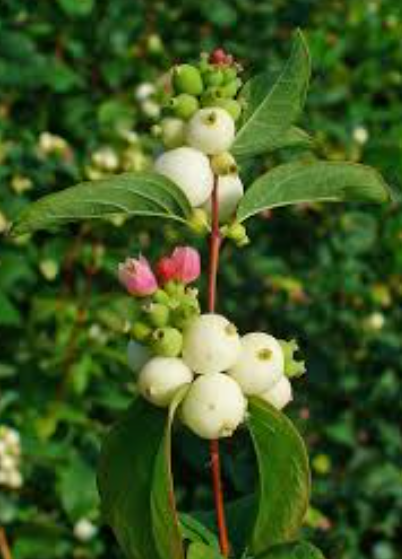Snowberry, Bare Root
Winter Berries & Wildlife Shelter
Snowberry, Bare Root - Bare Root / 1-2' is backordered and will ship as soon as it is back in stock.
Couldn't load pickup availability
Delivery and Shipping
Delivery and Shipping
Make sure to thoroughly review our entire "Shipping, Returns, Refunds, and Our Guarantee" page for all relevant details about ordering from our store.
Making a purchase from our store constitutes an agreement to all the conditions outlined in those policies.
We appreciate your support and look forward to being your favorite plant provider!
Subscribe to our newsletter
Sign up for exclusive offers.
Snowberry (Symphoricarpos albus)
Snowberry is a cold-hardy, thicket-forming native shrub known for its distinctive white berries, which persist through winter and provide valuable food and shelter for wildlife. Native across much of North America, Symphoricarpos albus thrives in a wide range of soils and light conditions, from dry uplands to moist forest edges. Its small, bell-shaped flowers support pollinators, and its dense branching offers cover and nesting habitat. Snowberry is an excellent choice for restoration, native hedgerows, and challenging planting sites where erosion control and biodiversity are priorities.
Key Characteristics
-
Winter berries for birds and visual interest
Clusters of bright white berries appear in late summer and often persist into winter, feeding birds such as grouse, waxwings, and robins. Though mildly toxic to humans, the berries are critical for wildlife during the cold months when food is scarce. -
Attracts native pollinators with summer blooms
Small, pink to white bell-shaped flowers bloom in mid to late summer and attract native bees, bumblebees, and beneficial insects. The plant provides mid-season forage in pollinator-supportive plantings. -
Dense growth provides shelter and erosion control
Snowberry’s suckering habit allows it to form dense colonies that stabilize soil and create thickets. These thickets offer excellent cover for birds and small mammals and are especially effective on slopes, streambanks, and disturbed areas. -
Thrives in shade or sun, dry or moist soils
Extremely adaptable, Snowberry grows well in sun or part shade and tolerates dry, rocky, clay, or seasonally wet soils. This makes it highly useful in restoration projects, woodland edges, and underplantings in the shrub or understory layer. -
Valuable in restoration and permaculture systems
Snowberry’s durability and habitat value make it ideal for wildlife corridors, native hedgerows, and permaculture zones in need of low-maintenance structure, erosion control, and seasonal diversity.
Product Details
- Native range: Most of North America, especially the northern and western U.S. and Canada
- Plant life cycle: Deciduous Shrub
- Sun requirements: Full sun to part shade
- Soil requirements: Medium-dry to medium-wet; tolerates poor, rocky, or clay soils
- Mature height: 3–6 feet
- Bloom time: Mid to late summer
- Bloom color: Pink to white
- USDA Hardiness zones: 2–7
Snowberry is a rugged, beautiful native shrub that supports pollinators, shelters wildlife, and brings winter beauty to the garden. Perfect for restoring degraded sites and adding ecological function to any landscape.
-
Sun RequirementsPart Sun/Shade, Full Sun
-
Soil RequirementsMedium-Dry, Medium
-
Bloom ColorPink
-
Bloom TimeMay, June
-
USDA Hardiness ZonesZone 3, Zone 4, Zone 5, Zone 6, Zone 7
Payment & Security
Payment methods
Your payment information is processed securely. We do not store credit card details nor have access to your credit card information.




